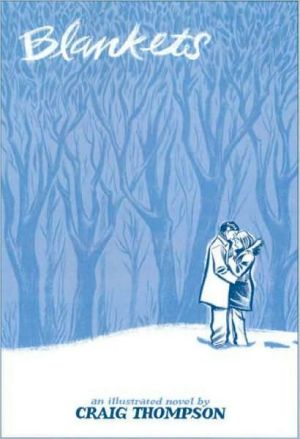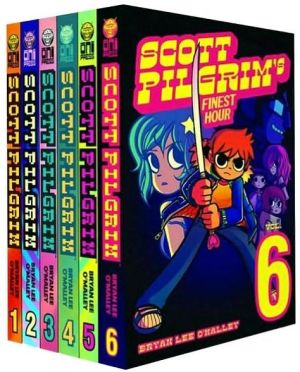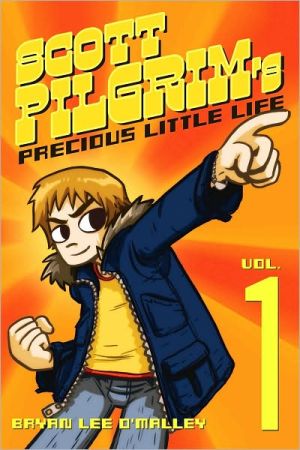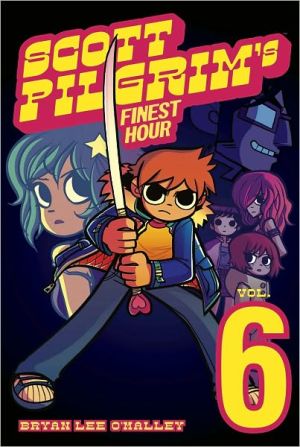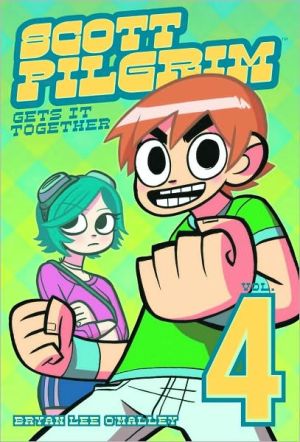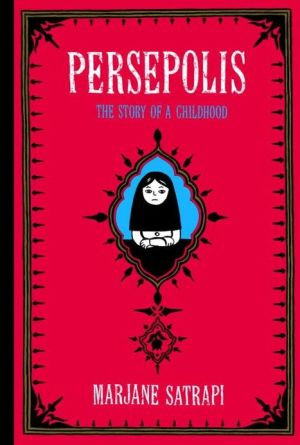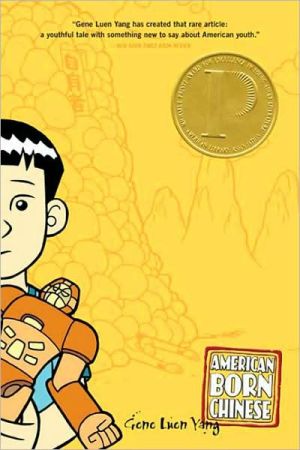Blankets
At 592 pages, Blankets may well be the single largest graphic novel ever published without being serialized first.\ Wrapped in the landscape of a blustery Wisconsin winter, Blankets explores the sibling rivalry of two brothers growing up in the isolated country, and the budding romance of two coming-of-age lovers. A tale of security and discovery, of playfulness and tragedy, of a fall from grace and the origins of faith. A profound and utterly beautiful work from Craig Thompson.\ The New...
Search in google:
At 592 pages, Blankets may well be the single largest graphic novel ever published without being serialized first.Wrapped in the landscape of a blustery Wisconsin winter, Blankets explores the sibling rivalry of two brothers growing up in the isolated country, and the budding romance of two coming-of-age lovers. A tale of security and discovery, of playfulness and tragedy, of a fall from grace and the origins of faith. A profound and utterly beautiful work from Craig Thompson.The New Printing corrects 3 small typos, widening the spine graphics, but otherwise is identical to the first printing.The New York TimesIn telling his story, which includes beautifully rendered memories of the small brutalities that parents inflict upon their children and siblings upon each other, Thompson describes the ecstasy and ache of obsession (with a lover, with God) and is unafraid to suggest the ways that obsession can consume itself and evaporate. — Ken Tucker
\ The New York TimesIn telling his story, which includes beautifully rendered memories of the small brutalities that parents inflict upon their children and siblings upon each other, Thompson describes the ecstasy and ache of obsession (with a lover, with God) and is unafraid to suggest the ways that obsession can consume itself and evaporate. — Ken Tucker\ \ \ \ \ Publishers WeeklyRevisiting the themes of deep friendship and separation Thompson surveyed in Goodbye Chunky Rice, his acclaimed and touching debut, this sensitive memoir recreates the confusion, emotional pain and isolation of the author's rigidly fundamentalist Christian upbringing, along with the trepidation of growing into maturity. Skinny, na ve and spiritually vulnerable, Thompson and his younger brother manage to survive their parents' overbearing discipline (the brothers are sometimes forced to sleep in "the cubby-hole," a forbidding and claustrophobic storage chamber) through flights of childhood fancy and a mutual love of drawing. But escapist reveries can't protect them from the cruel schoolmates who make their lives miserable. Thompson's grimly pious parents and religious community dismiss his budding talent for drawing; they view his creative efforts as sinful and relentlessly hector the boys about scripture. By high school, Thompson's a lost, socially battered and confused soul-until he meets Raina and her clique of amiable misfits at a religious camp. Beautiful, open, flexibly spiritual and even popular (something incomprehensible to young Thompson), Raina introduces him to her own less-than-perfect family; to a new teen community and to a broader sense of himself and his future. The two eventually fall in love and the experience ushers Thompson into the beginnings of an adult, independent life. Thompson manages to explore adolescent social yearnings, the power of young love and the complexities of sexual attraction with a rare combination of sincerity, pictorial lyricism and taste. His exceptional b&w drawings balance representational precision with a bold and wonderfully expressive line for pages of ingenious, inventively composed and poignant imagery. (July) Copyright 2003 Reed Business Information.\ \ \ VOYAStarting with his sometimes-rocky relationship with younger brother Phil, with whom he had to share a bed for years, Thompson leads the reader into his life in rural Wisconsin with staunchly fundamentalist Christian parents. Young Craig faces bullies at school and disapproval from teachers for some of his imaginative writing, and he feels a distinct dissatisfaction for the lack of real explanations for anything religious. Drawing becomes a means of escaping the harsher realities of life that only get tougher in high school. Craig continues to explore his vivid imagination in his art while trying to reconcile it with the restrictive beliefs of those around him. Then he attends a winter church "Snow Camp" and meets Raina, another rebellious soul. She becomes his muse, and he even convinces his parents to let him visit her in Michigan during the school year. They become intimate but after the visit do not see each other again. When Craig leaves home after high school, he leaves behind everything—including his religious belief and anything to remind him of Raina. This book reads so compellingly despite the quiet tone of the story that the reader does not really notice until the end the vast length of the book. The story does not flow sequentially, but moves back and forth in time. Thompson's black-and-white art conveys emotion beautifully, and his faces are remarkably expressive. The art is not strictly realistic, yet the text and art together feel real. His wordless passages convey so much information and feeling that the reader forgets that there is no text. Certain scenes that are more graphic in nature make this title more suited to older teens. Thompson questions Christianity (or atleast the "brand" of Christianity he knows) and comes to a conclusion that might bother some readers, but it is honest and heartfelt. VOYA Codes: 5Q 3P S A/YA (Hard to imagine it being any better written; Will appeal with pushing; Senior High, defined as grades 10 to 12; Adult-marketed book recommended for Young Adults). 2003., Top Shelf Productions, 592p., Trade pb. Ages 15 to Adult. \ —Kat Kan\ \ \ \ \ Library JournalFour years in the making, this is Thompson's follow-up to his first GN, the acclaimed Good-Bye, Chunky Rice. Here he enters the realm of autobiographical comics, intertwining the stories of his relationships with his younger brother, Phil (with whom he had to share blankets as a child), and with his first girlfriend, Raina (with whom he also shared a blanket). Raised by strict Catholic parents, Thompson struggles with his own faith, attracted to the message but repelled by the Church, and his black-and-white art makes use of Christian imagery. The art here is more realistic than that of Chunky Rice but sometimes erupts into angular, nightmarish images (like those of David B.'s Epileptic) or warm, paisley fantasyscapes. Among the trials and the happiness is another story, that of Thompson the artist: his youthful enthusiasm for drawing, his religion-inspired adolescent rejection of art, and his rediscovery of its power. That power is on full view here, in Thompson's masterly telling of a moving, deeply human story. The work contains some explicit nudity. More accessible than Chunky Rice, this is highly recommended for adult collections. Copyright 2003 Reed Business Information.\ \ \ \ \ School Library JournalAdult/High School-Thompson's Good-bye, Chunkie Rice (Top Shelf, 1999) offered readers well-realized but fantastic characters in a tale that nicely combined sentiment with adventure. This second, much longer work shares the acuity for character development and dynamic sensitivity that makes the author so compulsively readable. In Blankets, however, realism reigns supreme in both the story arc and in the humanity of its characters. Thompson himself is the protagonist, and this is his tale of growing up, falling in love (and realizing the physical and moral complications that can imply), discovering the texture and limits of his faith, and arriving at a point from which he can look back at those experiences. The snowy Midwest, peopled by overweight parents, hairy youths, and lovingly depicted younger siblings-including a respectfully and realistically treated minor character with Down syndrome-is energetically realized in Thompson's expressive lines and inking. Much of the story occurs when Craig and his brother Phil are young boys and includes images of such boyish pranks as peeing on one another. Older high school students who have reached an age when nostalgia is possible will warm to Thompson's own wistfulness. This is a big graphic novel, in concept and successful execution.-Francisca Goldsmith, Berkeley Public Library, CA Copyright 2004 Reed Business Information.\ \
